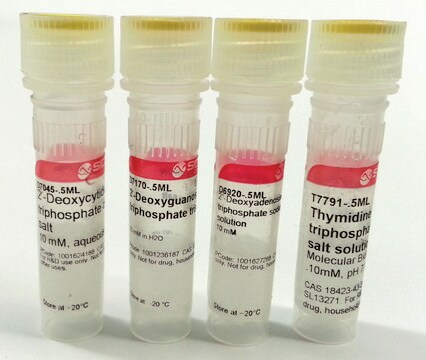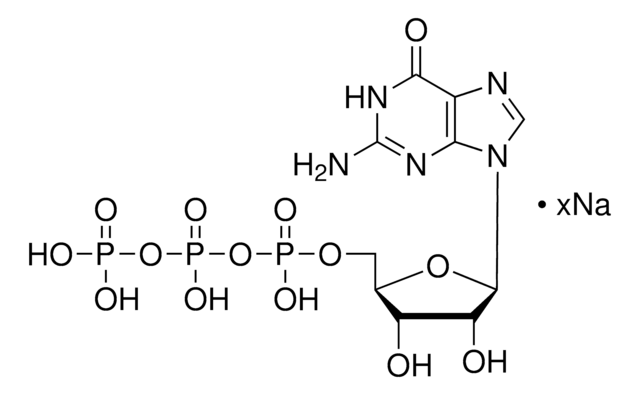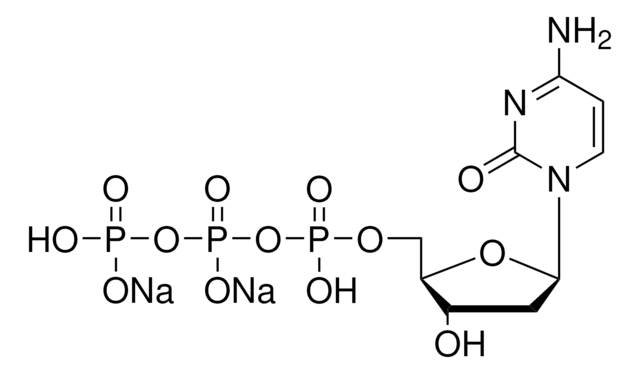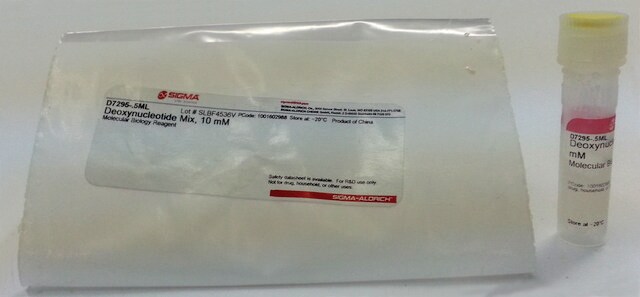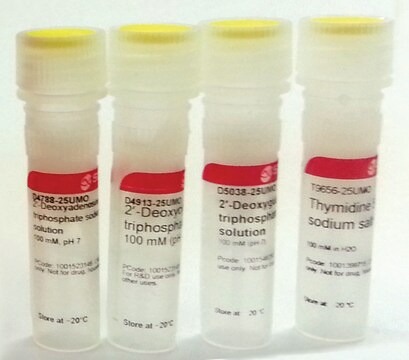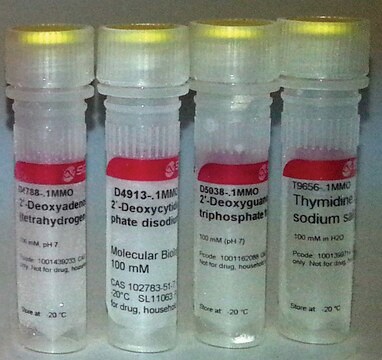D6920
2′-Deoxyadenosine 5′-triphosphate sodium salt solution
10 mM
Sinonimo/i:
dATP
About This Item
Prodotti consigliati
Saggio
≥99%
Livello qualitativo
Forma fisica
liquid
Concentrazione
10 mM
Colore
colorless
Attività estranea
DNase, RNase, NICKase, none detected
Condizioni di spedizione
dry ice
Temperatura di conservazione
−20°C
Stringa SMILE
[Na+].Nc1ncnc2n(cnc12)[C@H]3C[C@H](O)[C@@H](COP(O)(=O)OP(O)(=O)OP(O)([O-])=O)O3
InChI
1S/C10H16N5O12P3.Na/c11-9-8-10(13-3-12-9)15(4-14-8)7-1-5(16)6(25-7)2-24-29(20,21)27-30(22,23)26-28(17,18)19;/h3-7,16H,1-2H2,(H,20,21)(H,22,23)(H2,11,12,13)(H2,17,18,19);/q;+1/p-1/t5-,6+,7+;/m0./s1
YJWCICGGRLOGEH-VWZUFWLJSA-M
Cerchi prodotti simili? Visita Guida al confronto tra prodotti
Categorie correlate
Descrizione generale
Applicazioni
Codice della classe di stoccaggio
11 - Combustible Solids
Classe di pericolosità dell'acqua (WGK)
WGK 3
Certificati d'analisi (COA)
Cerca il Certificati d'analisi (COA) digitando il numero di lotto/batch corrispondente. I numeri di lotto o di batch sono stampati sull'etichetta dei prodotti dopo la parola ‘Lotto’ o ‘Batch’.
Possiedi già questo prodotto?
I documenti relativi ai prodotti acquistati recentemente sono disponibili nell’Archivio dei documenti.
I clienti hanno visto anche
Protocolli
Hot Start Taq Polymerase protocol to reduce non-specific amplification, with MgCl2 Optimization
Protocol using antibody mediated hot start polymerase. Method has short activation period (<1min), and results in higher yields and more specificity over standard PCR methods.
Protocol using antibody mediated hot start polymerase with a red dye for easy gel loading. Method has short activation period (<1min), and results in higher yields and more specificity over standard PCR methods.
Il team dei nostri ricercatori vanta grande esperienza in tutte le aree della ricerca quali Life Science, scienza dei materiali, sintesi chimica, cromatografia, discipline analitiche, ecc..
Contatta l'Assistenza Tecnica.
